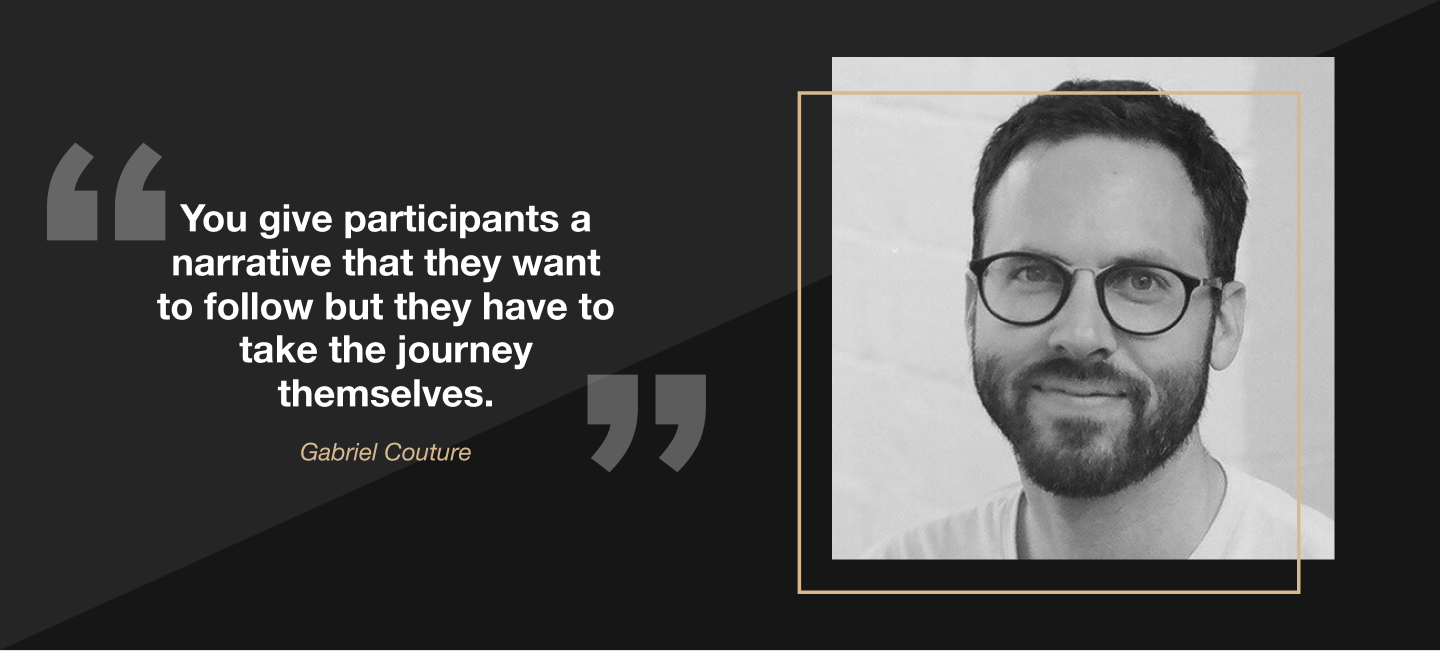Episode 104
March 17, 2021
104: How to use Integral Facilitation Quadrants to design successful workshops with Gabriel Couture

Sign up to download the free 1-page summary.
Intro
Empathy is a cornerstone of facilitation. Without it, we are only thrusting ideas and intentions on people. With it, we meet people where they are and work with them, as they need us too, to create the right outcome for that moment.
Gabriel Couture, a Learning and Service Experience Designer based out of Toronto, has been working on structuralising empathy – using a framework of integral facilitation quadrants that tap into people’s motivations, personalities, and moods.
We discussed integral facilitation quadrants at length, but also delved into the idiosyncrasies of facilitating large groups and the challenges of meeting online.
It was a wide-ranging conversation that flowed beautifully and uncovered some fascinating insights for both of us. I hope you will find it just as illuminating!
Find out about
What integral facilitation quadrants are and why they are effective tools
Why orientation and alignment are the ‘true north’ of meetings
Why appreciating that we all have different starting points (orientations) is the key to guiding a group
How we come from different places, have different motivations, and need different things to feel comfortable
The differences between facilitating small and large groups
Applying integral facilitation quadrants in online spaces
How Gabe has adapted his practice for online spaces
Identifying where structure stops helping and starts hindering the group
Don’t miss the next show: sign up to my newsletter and subscribe to the show through your podcast player.
Feeling inspired by the conversation in this episode? We can have our own – take a seat at my virtual table as part of a Mastermind Group.
And if the idea of NeverDoneBefore 2021, the festival of facilitation caught your attention; explore it in more detail!
Questions and Answers
01:20When did you first start calling yourself a facilitator?
04:08To what extent did gaining a certification change the way you worked as a facilitator?
08:12 Do the integral facilitation quadrants have a hierarchy? Do they have to be approached in a sequence?
10:44 How important is it to understand your audience when using integral facilitation quadrants?
12:28Do you design online and offline events in different ways, to accommodate for the increased variance of personalities?
15:57Can we picture the quadrants as obstacles that we need to overcome to achieve a successful outcome?
20:07What have you learned from integrating quadrants in your workshops and events?
23:00Is it easier or harder to facilitate large groups online?
27:06What is your experience with bringing people back from breakout rooms?
33:29Why is it that we tend to over-explain or over-structure in online meetings?
35:37What makes a workshop fail?
37:18Do you have a silver bullet exercise to get people to buy-in?
41:48What do you do when you realise somebody doesn’t want to be in your workshop?
45:58It seems you’re applying a lot of your coaching tools to your facilitation work?
47:17How do coaching skills scale from working with individuals to working with a group?
51:33If you had a hashtag, what would it be?
52:48What is the one thing you would like listeners to take away from this episode?
